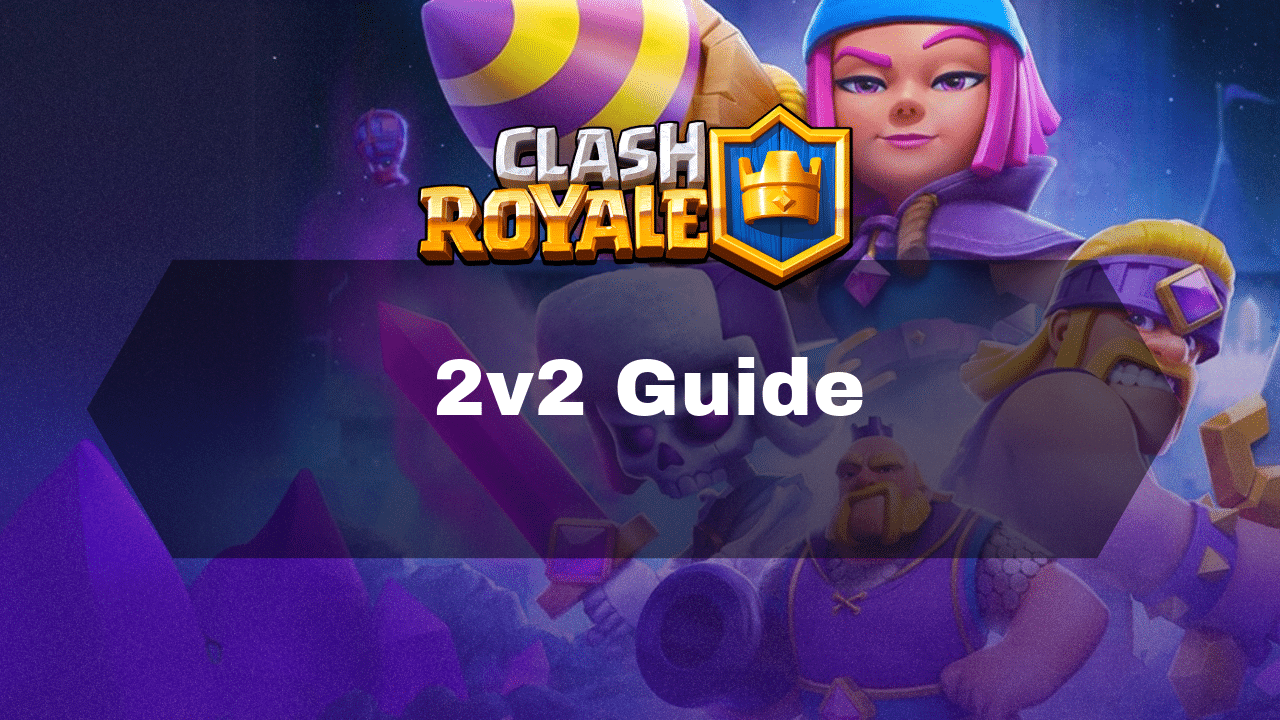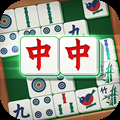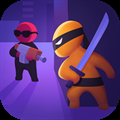
Introduction to 2v2 Mode
The Clash Royale 2v2 Guide highlights the 2v2 mode in Clash Royale, a cooperative game mode where two players team up to battle against another team of two. It provides a unique and enjoyable experience compared to the standard 1v1 battles, as players must work together to strategize and coordinate both their attacks and defenses. Communication and teamwork are key to success in this mode, as coordinating with your partner can make or break the outcome of the match. Unlike the competitive 1v1 mode, there are no trophies at stake in 2v2, allowing for a more relaxed environment where players can experiment with different strategies and enjoy the game without the pressure of losing progress.
Instead of trophies, players earn season tokens through participation, which are useful for unlocking rewards and progressing through the season. One of the standout features of the 2v2 mode is the flexibility in team composition, as players can join forces with friends, clanmates, or random online players. This makes it easy to jump into a match, whether you’re looking for a friendly game or a quick match with new teammates. Overall, the 2v2 mode in Clash Royale offers an excellent opportunity to enjoy the game in a more collaborative setting while still testing and refining your strategic skills.
Accessing 2v2 Mode
To access the 2v2 mode in Clash Royale, navigate to the “Party!” tab on the main screen. This section may also be referred to as the “events” tab. Once in this section, you will find the option to play 2v2.
There are a couple of ways to join a 2v2 match:
Quick Match: This option will pair you with a random online player. It’s perfect for those looking for a quick, casual game without a specific partner in mind.
Play with a Friend: This allows you to invite a friend from your friends list or clan to join you in a 2v2 match. You can also send an invitation to clan members through the purple friendly battle button for a more personal and cooperative experience.
Previously, the 2v2 mode was accessible directly from the home screen, next to the “Battle” button, but it has since been moved to the “Party!” or “events” tab for easier access to all casual game modes.
2v2 Gameplay Mechanics
In 2v2 matches in Clash Royale, each player uses their own deck of cards, and unlike 1v1 battles where you focus only on your own strategy, 2v2 requires you to be mindful of your teammate’s cards, elixir count, and overall strategy. You can see your teammate’s current card cycle and elixir count by clicking on their name during the match, which helps improve coordination and planning.
A key element of successful 2v2 gameplay is communication, which is facilitated through in-game mechanics such as:
Card Hovering: By hovering a card over the arena without releasing it, you can signal your intent to your teammate. This helps indicate where you plan to place your card, making it easier to coordinate attacks and defenses. Hovering also reduces the chances of using the same card at the same time, saving valuable elixir.
Emotes: Emotes provide a way to communicate with your teammate, offering positive reinforcement like “Well Played” or signaling potential mistakes with negative emotes. This adds an extra layer of interaction and coordination, boosting team morale and providing feedback in real-time.
The structure of the arena in 2v2 matches differs from 1v1 battles in several key ways:
Tower Troops: The tower troops on each side of the arena are not always the same, with one player possibly having a Princess Tower and the other having a Cannon Tower. This creates unique strategic dynamics, as different tower troops have different strengths and weaknesses.
King Towers: The King Towers in 2v2 are positioned slightly to the side and duplicated, with each player having their own Cannon. This setup makes it easier to activate the King Tower, especially since it’s closer to the Crown Towers. Additionally, activating the King Tower in 2v2 results in double the damage output compared to 1v1, making it a critical aspect of gameplay.
These differences in arena structure and the added communication tools make 2v2 matches in Clash Royale a unique and dynamic experience, emphasizing the need for teamwork, awareness, and strategic coordination.
Key Strategies for 2v2
In 2v2 mode in Clash Royale, communication and coordination are key to success. It’s important not only to play well individually but also to work closely with your teammate to secure victory. Voice chat or external apps for communication are incredibly useful for coordinating attacks and defenses, as they allow for real-time discussion.
One key tool for in-game communication is card hovering, which lets you signal where you intend to deploy a card, helping to avoid over-committing or using the same cards. It’s also important to support your teammate when they initiate a push, but you should be cautious not to over-commit elixir early on. Instead, save it for a main push when the timing is right. Being aware of your partner’s elixir and card cycle by clicking on their name helps with coordination, ensuring that both players can attack and defend effectively.
Teamwork and support are vital in 2v2. You should always be ready to assist your teammate with their pushes and defenses. When your partner is low on elixir, it’s your job to help defend and keep the pressure off them. A cohesive team that communicates well and supports each other has a much higher chance of succeeding. It’s also crucial to be fair and avoid intentionally disconnecting, as this can ruin the experience for your teammate. A good attitude and collaborative mindset are essential to maintaining morale and playing effectively.
Effective elixir management is another crucial factor. By being aware of your partner’s elixir, you can better coordinate your attacks and avoid overspending, which could leave both players vulnerable to counter-attacks. It’s essential to save enough elixir for defense, especially since many players tend to play aggressively. Coordinating your attacks to ensure both players have similar elixir levels also helps in executing synchronized pushes.
On the offensive side, orchestrated pushes can lead to overwhelming the opponent. Each player should deploy their troops strategically, focusing on synchronizing attacks for maximum impact. Coordinating these attacks ensures that both players can apply pressure on the same target and overwhelm the enemy. It’s also beneficial to focus on one tower to increase the chances of taking it down.
Defensively, a strong defense is crucial to holding off opponent pushes. Be prepared to absorb some damage to give you the opportunity to build a counter-attack. Spacing out your troops effectively is important to avoid giving the opponent big spell value, especially from spells like Arrows or Fireball. When your teammate has less elixir, consider using smaller defenses to hold the line. Additionally, splash damage cards are invaluable for dealing with groups of enemy units, making them a staple in any solid defensive strategy.
By focusing on these strategies, players can enhance their teamwork, elixir management, and coordination, ultimately increasing their chances of success in 2v2 mode.
Deck Building for 2v2
When building a deck for 2v2 mode in Clash Royale, it is important to create a balanced deck that can handle a variety of threats while complementing your teammate’s strategy. A well-rounded deck should include a light spell, a big spell, a mini tank, and a tank killer.
It’s also beneficial to have a tank, one or two swarm units, and a surprise factor such as Clone, Rage, or Freeze to catch your opponents off guard. Be sure to include at least two counters to the Hog Rider, as opponents often carry multiple. Decks should have a mix of offensive and defensive cards, as well as low, medium, and high-cost cards to avoid being stuck with an overly expensive deck.
Versatile cards that can counter a range of threats are valuable, such as Zap, Fireball, Skeleton Army, Goblin Gang, and Knight. For your win condition, make sure to include at least one reliable option such as Hog Rider, Giant, Golem, Lava Hound, or Graveyard. Spells like Fireball, Poison, and Lightning are important for dealing damage to enemy towers or clearing out troops that may interfere with your attacks. Tornado and Log are great for countering swarms and resetting targeting.
In terms of support cards, splash damage troops like Baby Dragon, Electro Dragon, Executioner, and Wizard are essential in 2v2 due to the larger number of troops on the battlefield. Mega Minion, Magic Archer, and Electro Wizard are versatile support cards that can handle both air and ground threats. Defensive buildings, such as the Furnace for chip damage or the Goblin Cage for countering units like Ram Rider, can provide added control of the battlefield.
Several deck archetypes are effective in 2v2, including Lava Hound decks, which use the Lava Hound to absorb damage while the Balloon deals heavy damage; P.E.K.K.A decks, which rely on P.E.K.K.A as a tank and transition into counter-pushes; Royal Giant decks, which focus on the Royal Giant as a primary win condition; Golem decks, which rely on the Golem as a tank supported by cards like Night Witch and Lumberjack; and Graveyard decks, which deal chip damage over time and are often paired with Freeze to prevent the opponent from defending. Bridge Spam decks focus on constant pressure at the bridge, aiming to overwhelm the opponent.
Some cards should be avoided, such as using more than one building in a deck, as it can clutter the defensive space and give opponents valuable spell targets. Cards like Wizard and Three Musketeers are risky due to their vulnerability to spells, and under-leveled cards can negatively impact your deck’s effectiveness. Elixir pumps are also not recommended, as they are easily countered by spells.
When it comes to synergy, it’s important to select decks with great synergy but opposite archetypes to avoid being double-countered. Complementing your teammate’s deck is key—if one player uses a heavy beatdown deck, the other can use a fast cycle deck. If your teammate has Graveyard, choosing Poison instead of Rocket is a good idea. Dividing synergy cards between the two decks, such as having one player use Executioner and the other use Tornado, helps maximize the effectiveness of your teamwork.
For additional success, keep your deck cheap, but not overly so, as you don’t want to be left with an unplayable deck. Consider adding a “pocket card”, a card that might surprise your opponents. Since 2v2 is more defensive than other modes, it’s useful to have a cycle deck, which is often faster and cheaper. Be aware that 2v2 matches feature more splash cards, so avoid decks like Royal Hogs that may struggle to connect with the tower due to the increased splash damage.
By following these deck-building strategies, you and your teammate can create a well-rounded, synergistic deck that will increase your chances of success in 2v2 mode in Clash Royale.
Double Elixir in 2v2
In Double Elixir mode in 2v2 battles, the pace of the game increases significantly due to faster elixir regeneration. While the elixir bar regenerates slightly slower compared to 1v1 battles, the faster rate of elixir generation in Double Elixir makes the game much quicker and encourages more aggressive strategies. Players should coordinate with their teammate to launch synchronized attacks and mount aggressive pushes, taking advantage of the faster elixir cycle. At the same time, it’s crucial to defend efficiently by quickly cycling to defensive cards and avoiding over-committing on defense, which could leave you vulnerable to a counter-push.
Spell cycling becomes much more effective during Double Elixir, as players can quickly cycle back to their spells to deal with enemy threats. If the enemy tower is below the 2x Rocket threshold, players can use spells to finish off the tower and secure a win. Additionally, opponents often deploy multiple troops, providing opportunities for positive elixir trades, allowing you to gain an elixir advantage. To maintain control, it’s important to keep both players’ elixir counts balanced by orchestrating pushes and avoiding situations where one player has a significant elixir disadvantage.
Deck-building strategies for Double Elixir should focus on maintaining a mix of low, medium, and high-cost cards to avoid getting stuck with an unplayable, overly expensive deck. While it’s best to keep your deck cost-effective, it should not be so cheap that you struggle to keep up with the fast-paced action. Heavy tanks can be particularly useful for mounting massive pushes during Double Elixir, and versatile cards that can counter a variety of threats are essential. Spells also become more valuable in this mode, as there are more troops on the battlefield, so it’s important to avoid using cards that are easily countered by spells.
Communication with your teammate is key in Double Elixir mode, as coordinated strategies will make or break the match. Players can use card hovering to signal their intent, allowing their teammate to react accordingly and avoid wasting elixir. By managing elixir efficiently, communicating effectively, and making the most of the faster elixir regeneration, players can dominate in Double Elixir mode and capitalize on the opportunities it provides for aggressive gameplay and strategic spell use.
Learning and Improvement
To improve your 2v2 gameplay in Clash Royale, it’s essential to focus on several key aspects, including communication, deck-building, and in-game strategies. Start by analyzing your wins and losses, watching replays to understand what went right or wrong, and identifying any mistakes made by your teammates. Pay attention to the strategies of top players, and adapt their successful tactics to your own play style.
Effective communication is crucial in 2v2. Use card hovering to signal your intentions and avoid overlapping plays, and be sure to monitor your teammate’s cards and elixir count by clicking their name. This allows for better coordination and timing of attacks. In addition, make use of emotes to convey positive or negative feedback to your teammate, and consider using external voice chat when playing with friends to enhance coordination. Discuss playstyles and potential counters to ensure you’re on the same page, and work together to optimize card placements and elixir usage.
Deck-building is another vital aspect of 2v2. Choose decks with synergy, ensuring they complement your teammate’s deck. Aim for a mix of offensive and defensive cards and ensure you include a reliable win condition. Having a variety of spell cards is important for clearing enemy troops or supporting your own pushes. Avoid stacking too many buildings in a deck and refrain from using the Elixir Collector, as it can be easily countered by spells. It’s also crucial not to use under-leveled cards that may hinder your performance.
During gameplay, prioritize supporting your teammate’s pushes without overcommitting on elixir. Be mindful of your elixir usage and avoid spending it all at once, as this can leave you open to counter-attacks. Sometimes, taking a bit of damage can be a smart strategy to build a stronger counter-push. Space out your units to minimize the value of spells like Fireball or Arrows, and always focus your attacks on a single tower to maximize pressure.
Defend your towers efficiently and use spells wisely to clear enemy troops or assist your pushes. Strive to maintain a similar elixir level to your teammate and coordinate attacks for a stronger offensive. Patience is key—wait for the right opportunities to launch a decisive push.
Maintaining the right mindset is essential for success in 2v2. Avoid tilting, even when playing with random teammates or when things go wrong. Don’t give up, even if your teammate makes a mistake. Stay focused and keep trying your best, as your performance is what ultimately contributes to victory.
By focusing on these strategies, you can improve your 2v2 gameplay, enhance coordination with your teammate, and increase your chances of winning in Clash Royale.
Conclusion
To succeed in Clash Royale’s 2v2 mode, it’s crucial to recognize that it’s distinct from 1v1 battles. It demands a combination of individual skill and seamless teamwork. To achieve success, focus on four key areas: deck building, communication, gameplay strategy, and mindset.
Deck Building is the foundation of any strong 2v2 strategy. A well-balanced deck is essential, so ensure you have a mix of offensive and defensive cards. Always include at least one win condition and complement it with supporting troops and spells. Include versatile cards that can handle both air and ground threats, and make sure you have counters for popular cards like the Hog Rider. Avoid using more than one building in your deck, as it can limit your defensive flexibility, and steer clear of Elixir Collectors, which are vulnerable to spells. Also, make sure your cards are at appropriate levels to maximize their effectiveness.
Communication is key in 2v2 and sets it apart from 1v1. Whether you’re playing with a friend or a random teammate, effective communication is crucial for coordinating strategies. Hover your cards to signal your intentions, and always check your teammate’s elixir and card cycle to sync your actions. Use emotes for quick communication, though keep in mind they may be muted by your teammate. When playing with a friend, external voice chat is the most effective way to coordinate in real-time.
In terms of Gameplay Strategy, always support your teammate’s pushes, but be mindful of overcommitting elixir. Sometimes, it’s better to take some damage to build a stronger push later. Focus your attacks on one tower to maximize pressure and avoid splitting your forces. When defending, space your units out to minimize the impact of enemy spells. Patience is key—wait for the right opportunities to launch your attacks. The Double Elixir phase speeds up the game, allowing for quicker cycles, so make sure to capitalize on this by cycling to your spells faster and mounting aggressive pushes.
Mindset is essential in maintaining success. Stay positive and supportive of your teammate, even if they make mistakes. Avoid tilting or disconnecting, as it’s important to remain calm and focused throughout the match. Remember that 2v2 is not just about winning; it’s also about having fun and learning as a team.
Lastly, Learning and Improvement are critical for long-term success. After every match, take time to analyze both your wins and losses. Watch replays to identify what worked well and where improvements can be made. By continually learning from each match and refining your strategies, you and your teammate can grow stronger and more synchronized.
In summary, 2v2 in Clash Royale requires both individual skill and effective teamwork. Mastering deck building, communication, gameplay strategies, and maintaining a positive mindset will significantly increase your chances of success. The key is adapting to your teammate’s playstyle while honing your own, making collaboration and strategy the driving forces of victory.













